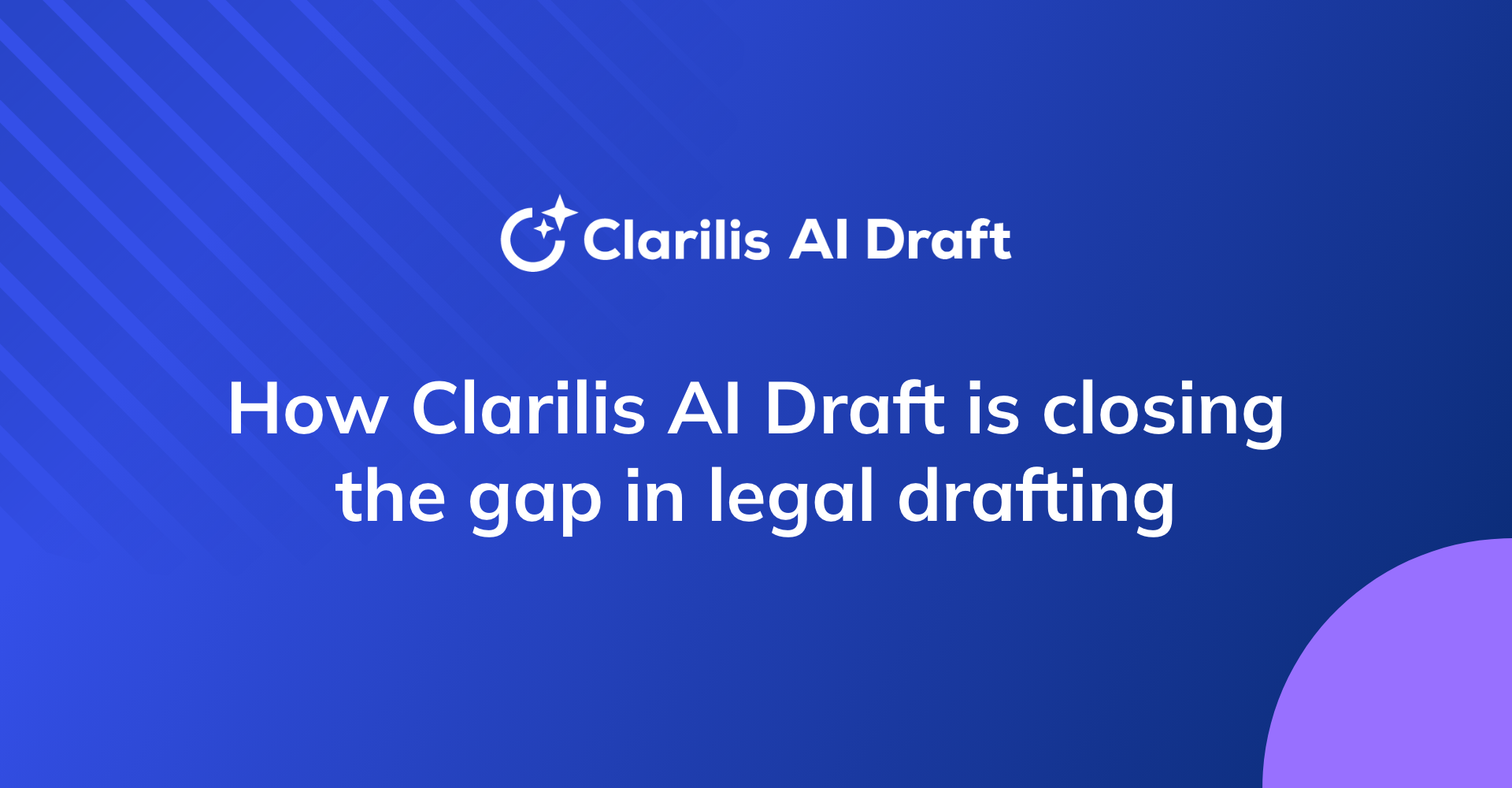Clarilis AI Draft is now integrated into a range of our products, including Real Estate Plus, Corporate Plus, the M&A Suite, and the Early-Stage Investment Suite.
Clarilis’ ready-to-deploy automated suites have been at the forefront of a steady march by law firms towards hyper-efficiency in drafting. By turning market-standard content into automated precedents, our intelligent automation technology enables lawyers to produce first drafts that are 90% complete in minutes, with minimal effort. But no matter how thorough our automations are, they simply can’t account for every nuance, exception, or deal-specific scenario. In other words, even with deep automation, completing the final 10% of that first draft typically relies on manual drafting. With the explosion of generative AI, we asked ourselves: can AI help close this gap?
At Clarilis, we’ve always been clear that we would only launch a GenAI-powered solution if leveraging LLMs significantly augmented the drafting experience. With Clarilis AI Draft we’ve achieved this. And our new AI-powered drafting feature is now included as an embedded feature across many of our products.
How it works
Once users complete the standard Clarilis automation process – filling out the questionnaire to generate a suite of documents – users can, if they choose, use AI Draft to assist with any additional drafting they require. This might be generating text for bespoke clauses, inserting new defined terms, creating emails, or even producing an entirely new document.
Unlike general-purpose AI tools (which can produce anything from LinkedIn posts to computer code), AI Draft is highly configured for legal drafting tasks. Looking for a new clause? A definition? An ancillary document? Each task adheres to a different set of drafting conventions and structural requirements, and AI Draft adapts accordingly. This enables lawyers to simply ask for the drafting they require, without worrying about specifying (and remembering) those drafting conventions or needing to become expert ‘prompt engineers’.
Combining AI and legal expertise
AI Draft is integrated into an expanding range of Clarilis products, including Real Estate Plus, our M&A Suite, and our Early Stage Investment Suite. In each product, the AI is specifically adapted to provide drafting for the relevant practice area. This means, for example, when you use AI Draft in Real Estate Plus, it understands commercial real estate transactions and your drafting context: if you ask it to suggest a process agent clause or limitation of liability provisions, it understands the drafting a lawyer would expect in this context. Ask it for a title indemnity policy definition or a satisfactory premises licence condition precedent, and it will provide real estate-specific drafting. Likewise, if you are drafting using our automated M&A Suite, asking for a letter waiving a shareholder’s pre-emption rights or an open-source software warranty produces drafting relevant to an M&A context.
This capability is a product of Clarilis’ unique combination of technical and legal expertise: Clarilis’ knowledge lawyers, each an expert in their respective area of law and with an average of 15 years’ PQE, have been central to the design, development and testing of AI Draft, and have configured it to reflect those practice specific best practices.
Designed for confidence and control
Beyond content, AI Draft is also designed to fit seamlessly into your drafting and review workflow. AI Draft content is inserted directly into the automated document with the correct formatting and in the most appropriate position – whether it’s a new clause slotted into the relevant section, or a definition added alphabetically. This means lawyers avoid wasting time manually editing or relocating content.
Unlike automated content, AI drafting still requires expert review, so AI Draft makes it easy to visually identify AI-generated content and separate it from the drafting provided by the automation. This ensures faster drafting without compromising legal oversight, giving users greater confidence in both the content and the process.
Closing the 10% gap
While Clarilis automations have long offered substantial improvements in the efficiency of producing a first draft, they stop short of handling all possible scenarios and deal-specific elements of a document. That’s where AI Draft steps in to close the final 10% gap.
Instead of drafting from a blank page or trawling through documents for example wording, lawyers now have a purpose-built AI drafting tool that generates high-quality, context-specific content in seconds. While this doesn’t replace professional legal judgment, it provides a strong starting point and accelerates the process of reaching a review-ready first draft.
And with less time spent on admin-heavy tasks like formatting, clause sourcing, or adapting boilerplates, more fee-earning time can be focused on the work that clients truly value – negotiating terms, shaping deal structures, managing risk exposure, and advising with commercial insight.
See AI Draft in action
Clarilis AI Draft is now included as part of Real Estate Plus, the M&A Suite, and the Early Stage Investment Suite. Book a demo to find out how it could help your firm.
Subscribe to blog
To stay up to date with all the latest news and insights, enter your email address.
(Privacy policy)

